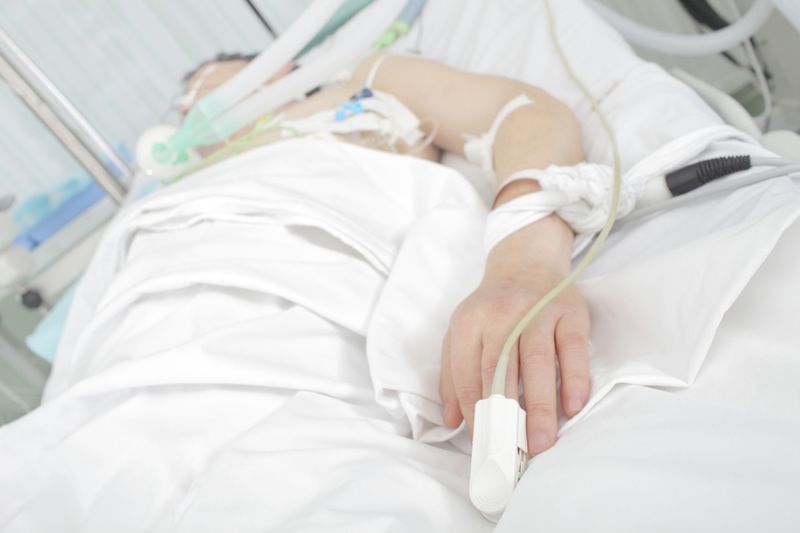Catholics express concern over eroding ‘brain death’ standards

 Patient in a hospital bed. Via Shutterstock / null
Patient in a hospital bed. Via Shutterstock / null CNA Staff, Mar 2, 2024 / 06:00 am (CNA).
A broad coalition of 151 Catholics including medical professionals, bioethicists, and scholars released a joint letter this past week expressing concern about new guidelines issued by a major neurological society regarding “brain death” — a hotly contested topic in the medical community and among people of faith.
The signers of the letter contend that the current guidelines regarding brain death from the American Association of Neurology (AAN), released in 2023, could lead in practice to patients being incorrectly pronounced “brain dead” and subsequently having their organs removed while still alive.
The Catholic Church has long supported — with Pope Francis carrying on the tradition — the idea of freely given organ donation as an act of charity for others.
However, the signers of the February letter contend that because of what they see as ambiguity in U.S. law and medical practice regarding the declaration of brain death, Catholics ought to remove themselves from their state’s organ donation registry and create advance directives refusing organ donation until those ambiguities are resolved.
The signers of the letter — which encompass a range of views on the validity of brain death — encouraged those engaged in Catholic faith formation and pastoral guidance to reiterate the importance of “moral certainty” that a person has died.
“All agree that the BD criteria found in the guidelines and used in current clinical practice do not provide moral certainty that a patient has died,” the signers wrote.
The statement was prepared by Joseph Eble, a physician and president of the Tulsa Guild of the Catholic Medical Association; John Di Camillo, an ethicist of The National Catholic Bioethics Center; and Peter Colosi, a philosophy professor at Salve Regina University.
What is brain death?
Brain death, also called “death by neurologic criteria,” is a commonly accepted practice of declaring a person dead based on the loss of brain function rather than the stoppage of the heart and breathing. A “brain dead” person on a ventilator may appear, at least to the untrained eyes, to still be alive.
While legal standards for determining brain death differ from country to country, in the U.S. the law relevant to brain death is the 1981 Uniform Determination of Death Act, which states that an individual who has sustained “irreversible cessation of all functions of the entire brain, including the brain stem, is dead.” All 50 states have adopted the UDDA into their own laws, with a few variations in the language used.
According to a 2020 study, brain deaths made up 2% of all deaths at U.S. hospitals between 2012 and 2016. In the United States, 70% of organ donors were declared dead using BD criteria in 2021, the February statement notes.
What has changed?
Ever since the concept of brain death was first introduced in 1968, the medical community has debated what exactly it entails.
The previous AAN guidelines, released in 2010, did not mandate tests for complete cessation of brain function beyond what can be diagnosed bedside, such as an electroencephalogram.
Further, AAN’s 2023 guidelines, announced in October, state that neuroendocrine function can persist in patients with permanent injury to the brain and “is not inconsistent with the whole brain standard of death.” The signers of the February statement note that AAN’s guidelines are “commonly accepted criteria for determinations of BD throughout the United States and are considered the most rigorous and comprehensive.”
When similar guidelines were introduced last year, the bishops of the United States weighed in, expressing concern that the rewrite “would replace the standard of whole brain death with one of partial brain death.”
“Nothing in Catholic teaching provides support for lowering the criterion to something less than ‘irreversible cessation of all functions of the entire brain,’” the bishops wrote.
“We are opposed to lowering that standard in the absence of compelling scientific evidence.”
The Catholic view
While the term “brain death” is not found in the Catechism of the Catholic Church, Pope John Paul II asserted in 2000 that, if properly diagnosed, the complete and irreversible cessation of all brain function seems a valid way to assess with “moral certainty” that a person has died. Moral certainty, the saint said, “is considered the necessary and sufficient basis for an ethically correct course of action.”
Catholic doctors and ethicists today largely echo the former pontiff in stating that brain death, when properly diagnosed, is not a “kind” of death; it is simply death, period.
However, brain death remains a hotly debated topic among some Catholic medical professionals and ethicists, partly because brain-dead donors are, today, the primary source of organ transplants. Organs such as the heart, lungs, and pancreas can be — and are routinely — harvested from brain-dead donors as close to the time of death as possible.
In his 2000 address, John Paul II stressed the importance of only removing organs from people who have definitively died. The pope’s speech built upon his writing in the 1995 encyclical Evangelium Vitae in which he decried any practice whereby “organs are removed without respecting objective and adequate criteria which verify the death of the donor,” calling such a practice a form of “furtive … euthanasia.”
The United States Conference of Catholic Bishops, in its 2018 Ethical and Religious Directives for Catholic Health Care Services, states that the “determination of death should be made by the physician or competent medical authority in accordance with responsible and commonly accepted scientific criteria.”




